Complete Solutions to Solved Examples of chapter CARBOXYLIC ACIDS AND THEIR DERIVATIVES of Class 12 book with complete answers and questions
| Class 12 | CHEMISTRY |
| Chapter | CARBOXYLIC ACIDS AND THEIR DERIVATIVES |
| CENGAGE CHEMISTRY | Solved Examples |
| Number Of Questions | 17 |
| Academic Year | 2023-24 |
Convert the following :
(a)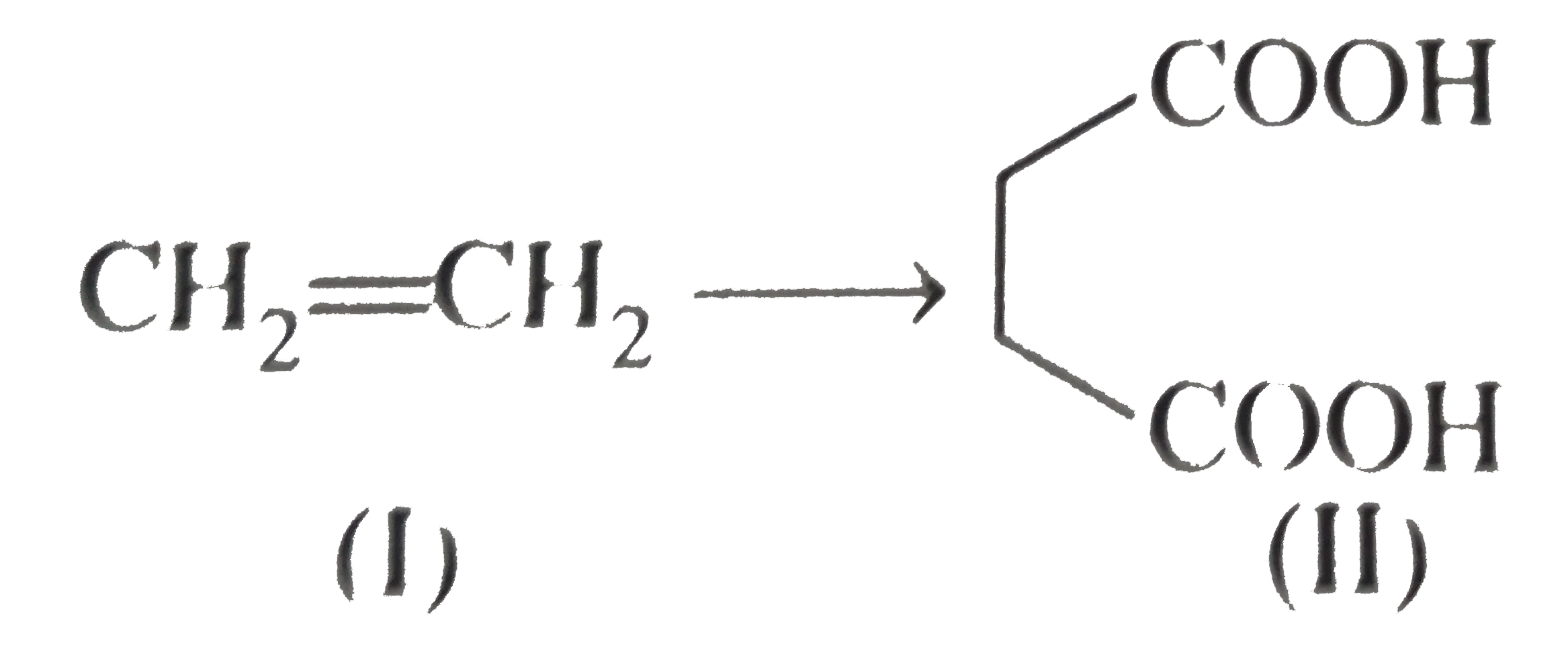
(b)`underset((I))(PhH("Benzene"))underset((II))(PhCOOH)("Benzoic acid")`
( c)
(d)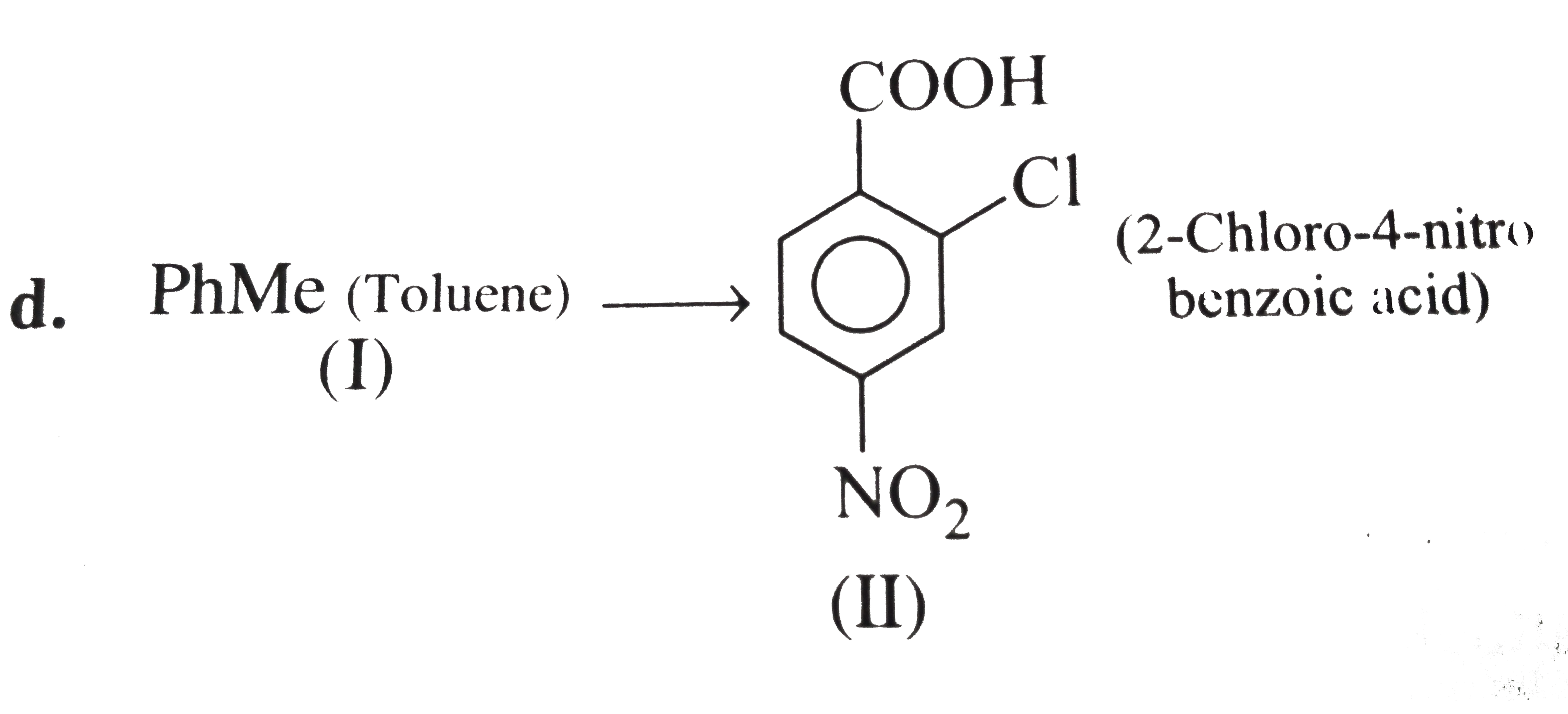
( e)
(f)
(g)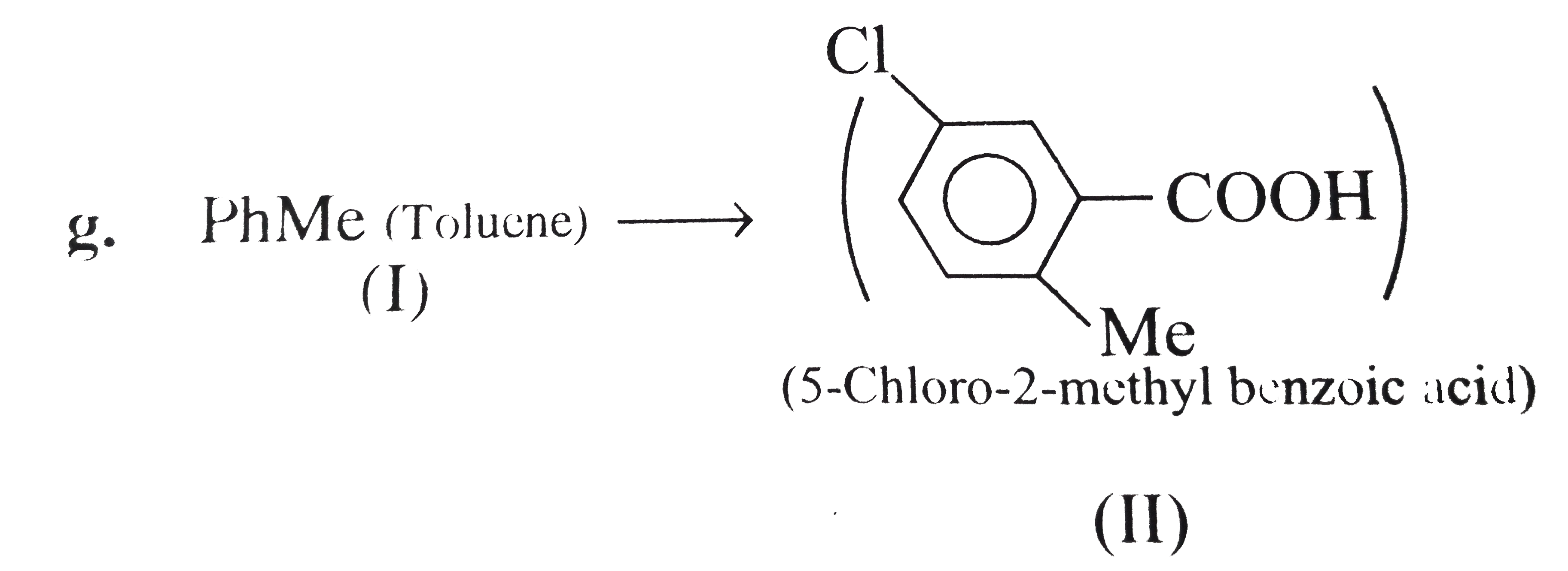
(h)
(i) `underset((I))(MeCOOH)("Acetic acid") rarr underset((II))underset(("Malonic acid"))((CH_(2)(COOH)_(2)))`13:55View SolutionThere are two paths for the preparation of `2-methyl` pentanoic acid `(III)` from `pentan-2-ol (I)`. Which path is feasible and why ?
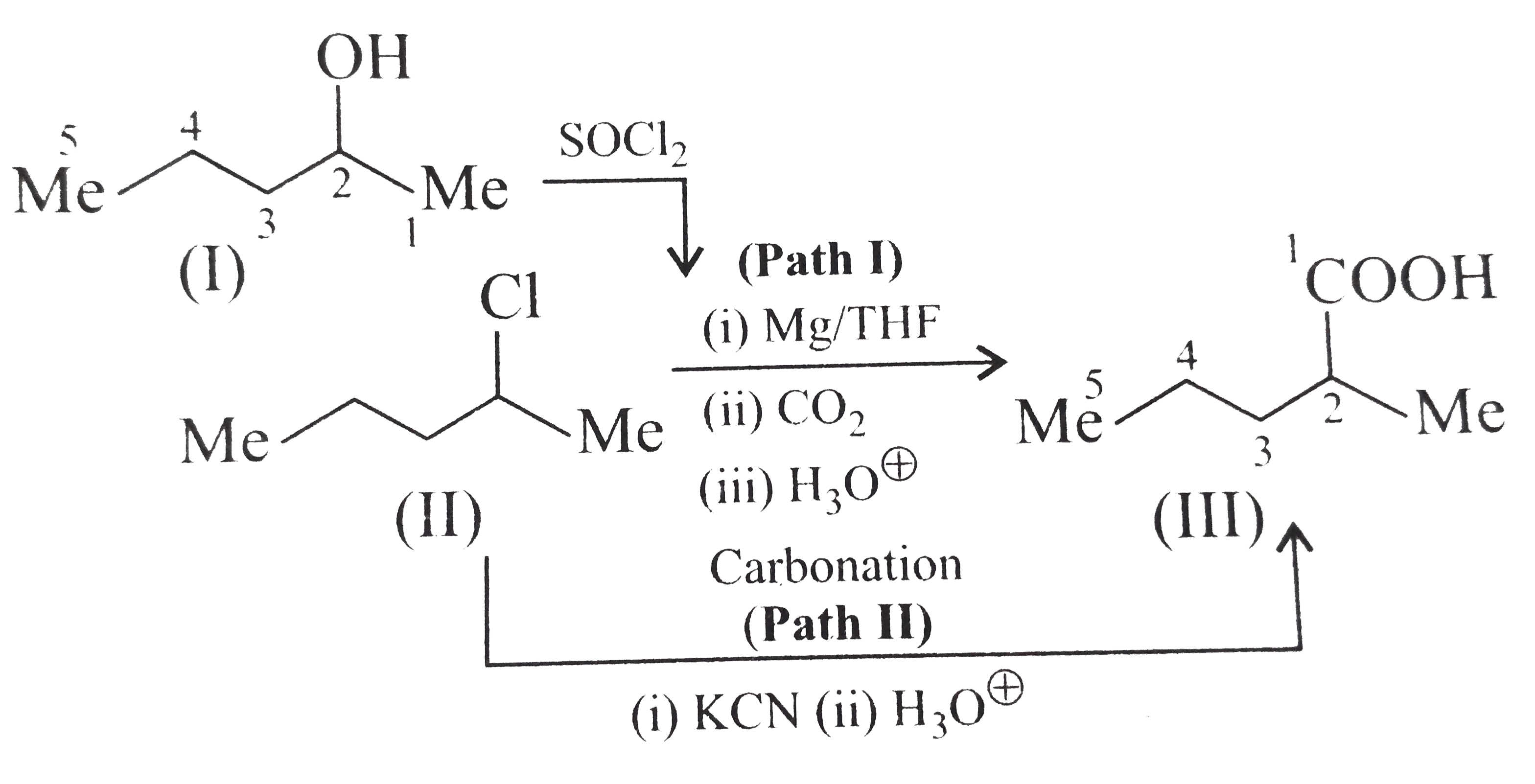 .02:10View Solution
.02:10View SolutionComplete the following reactions :
(a) 02:47View Solution
02:47View SolutionExplain the formation of the compound in the following reaction.
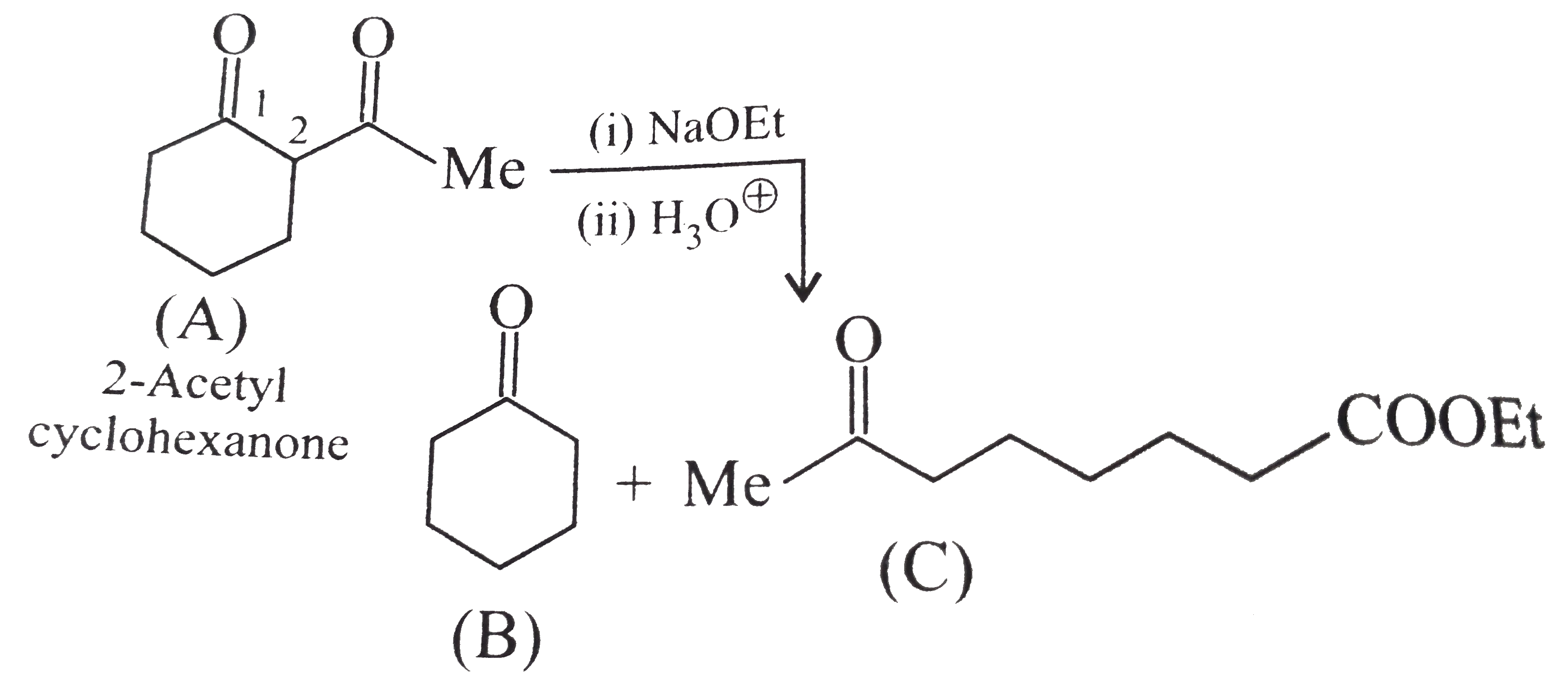 .03:19View Solution
.03:19View SolutionDifferentiate between the following :
(a) `(I)` Propanoic acid `(C_2 H_5 COOH)` and `(II)` acrylic acid `(CH_2 = CH - COOH)`.
(b) `(I) 2-`Bromo propanoic acid `(CH_3 CH Be COOH)` and `(II)` pyruvic acid `(MeCOCOOH)`
( c) `(I) 2-`Chloro-propanoic acid and `(II)` propanoic acid
(d) `(I)` Formic acid `(HCOOH)` and `(II)` acetic acid `(MeCOOH)`.
(e) `(I)` Malonic acid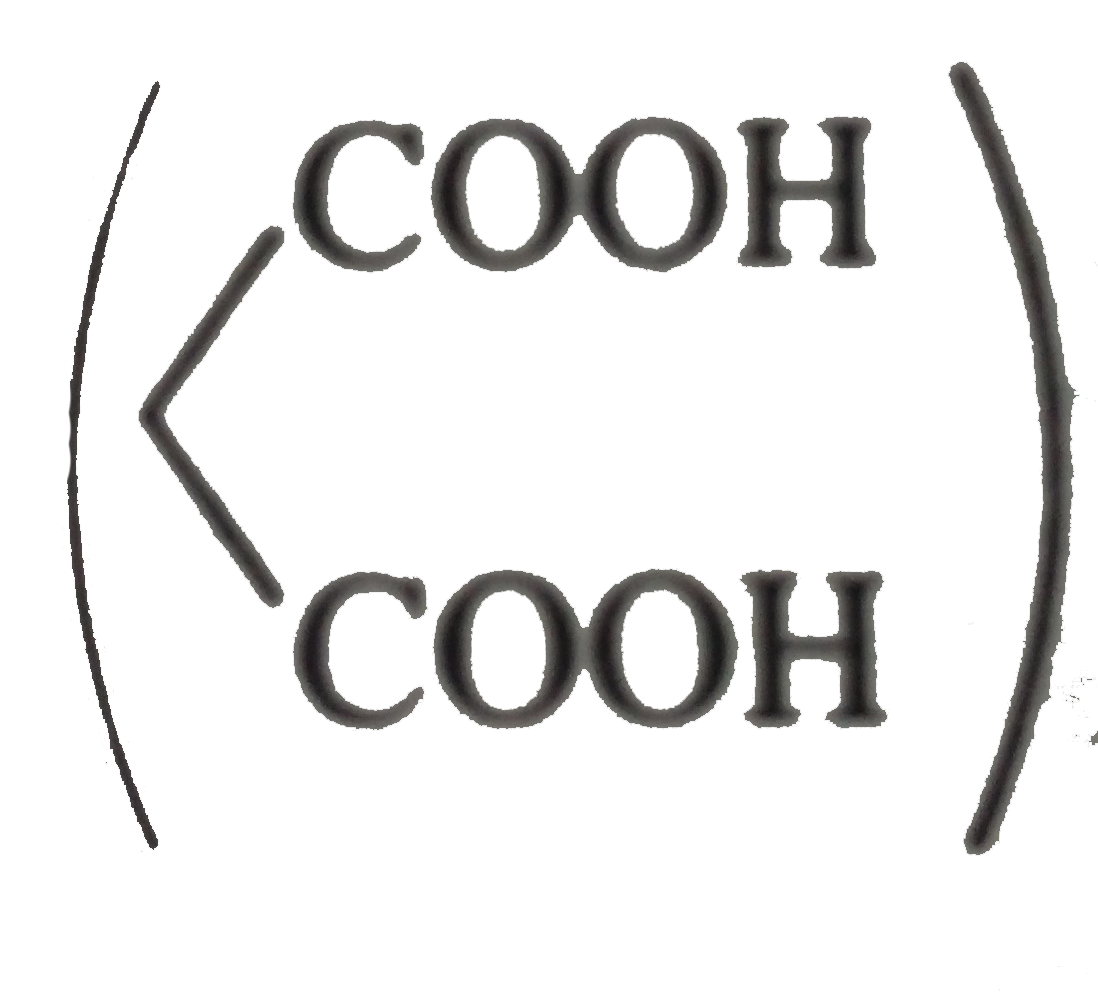 and `(II)` oxalic acid `((COOH)_2)`.
and `(II)` oxalic acid `((COOH)_2)`.
(f) `(I)` Malonic acid and `(II)` succinic acid
and `(II)` succinic acid 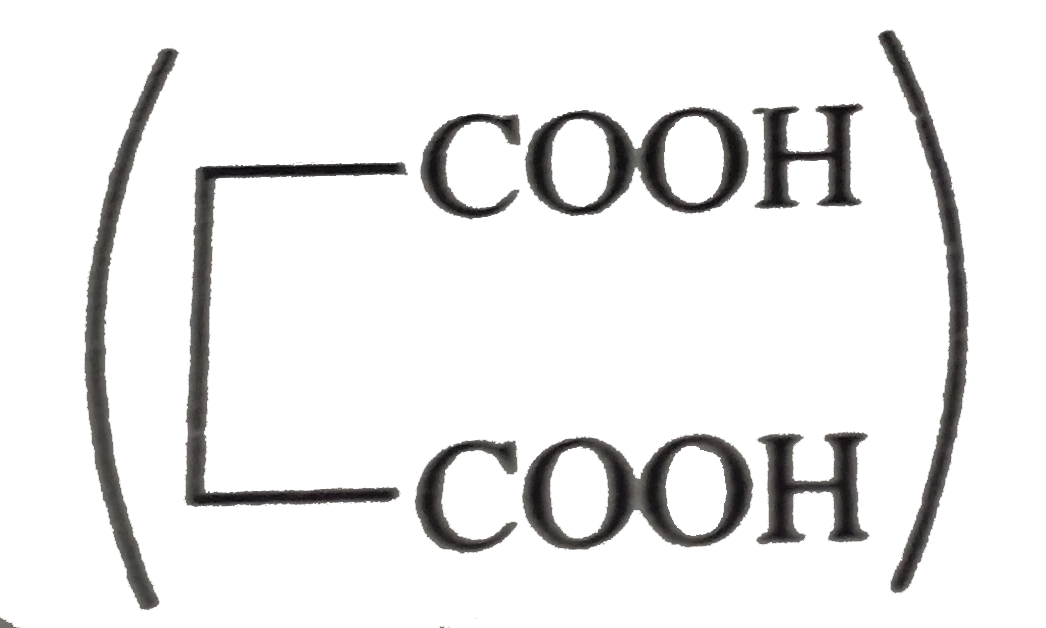
(g) `(I) n`-Butanolm (II) butanal, (III) dimethyl ether, `(IV)` butanoic acid, `(V)` butane.08:24View SolutionIdentify the products and explain their formation.
(a)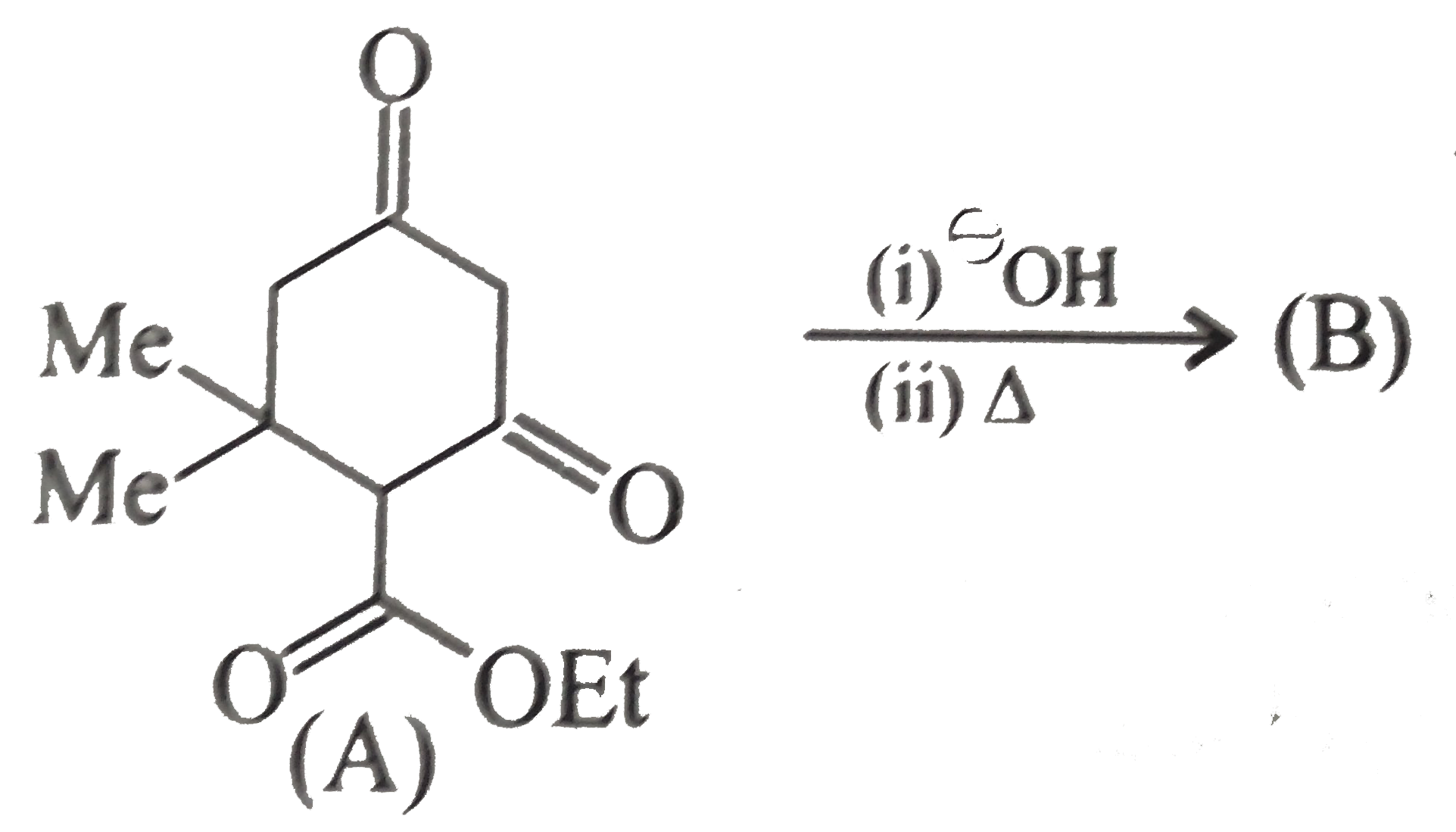
(b)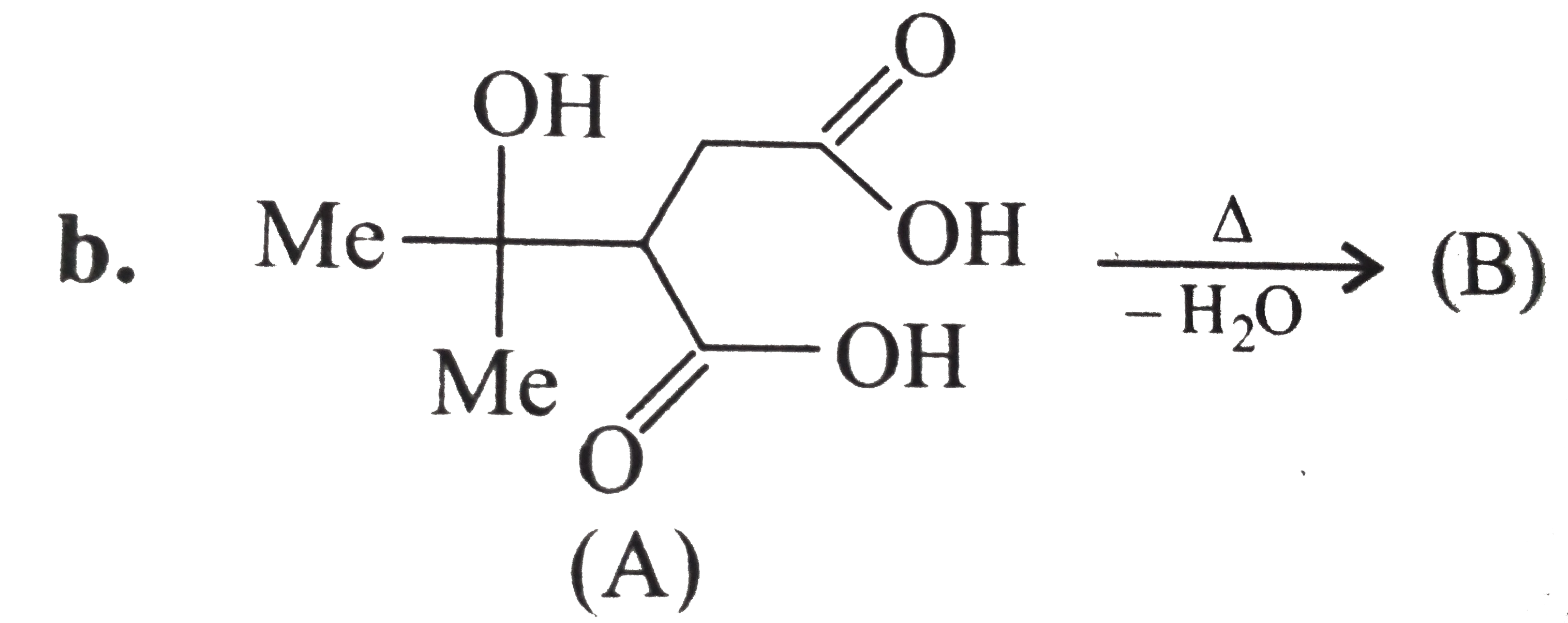
( c)
(d)
( e)
(f)
(g)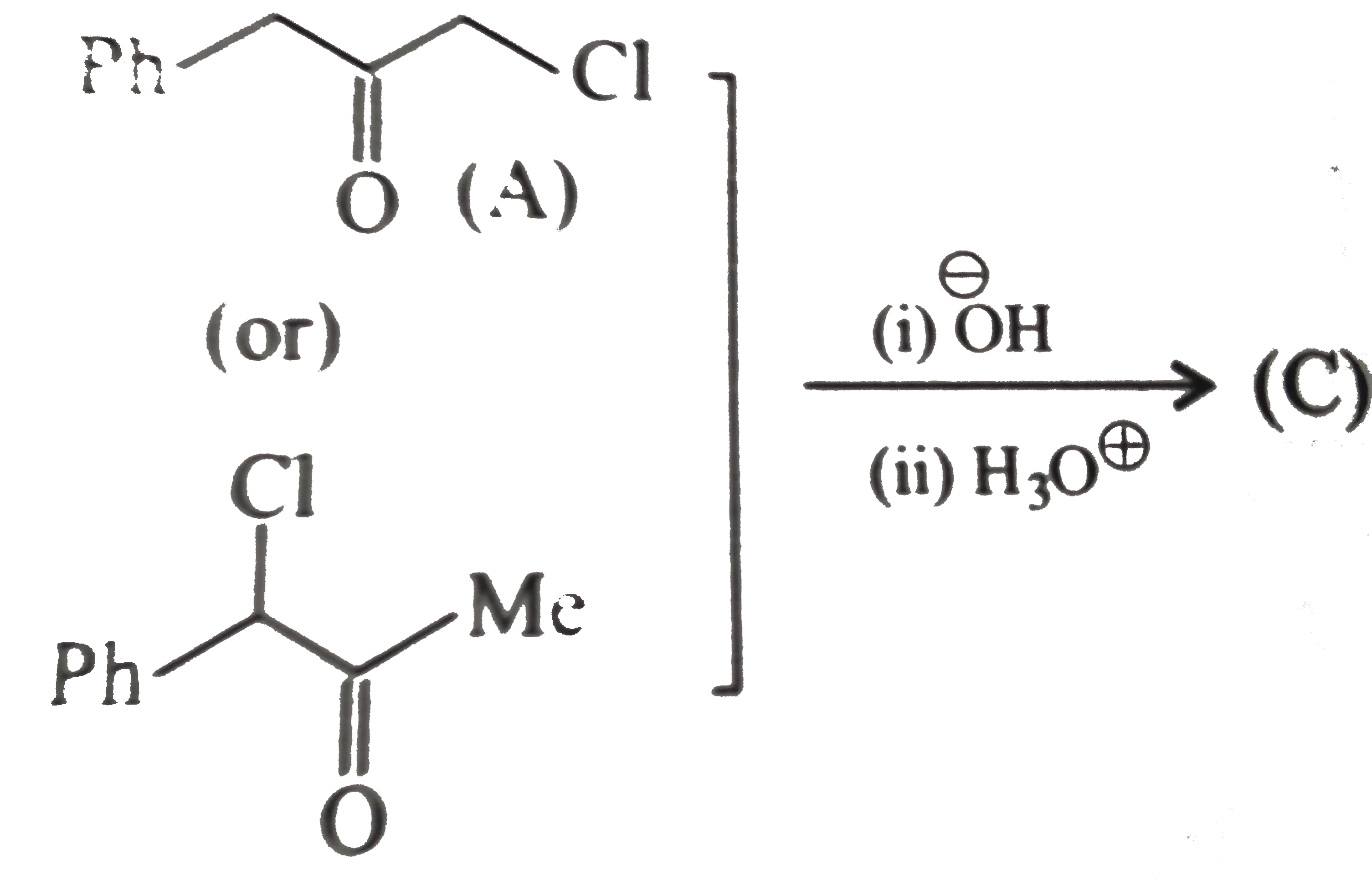
(h)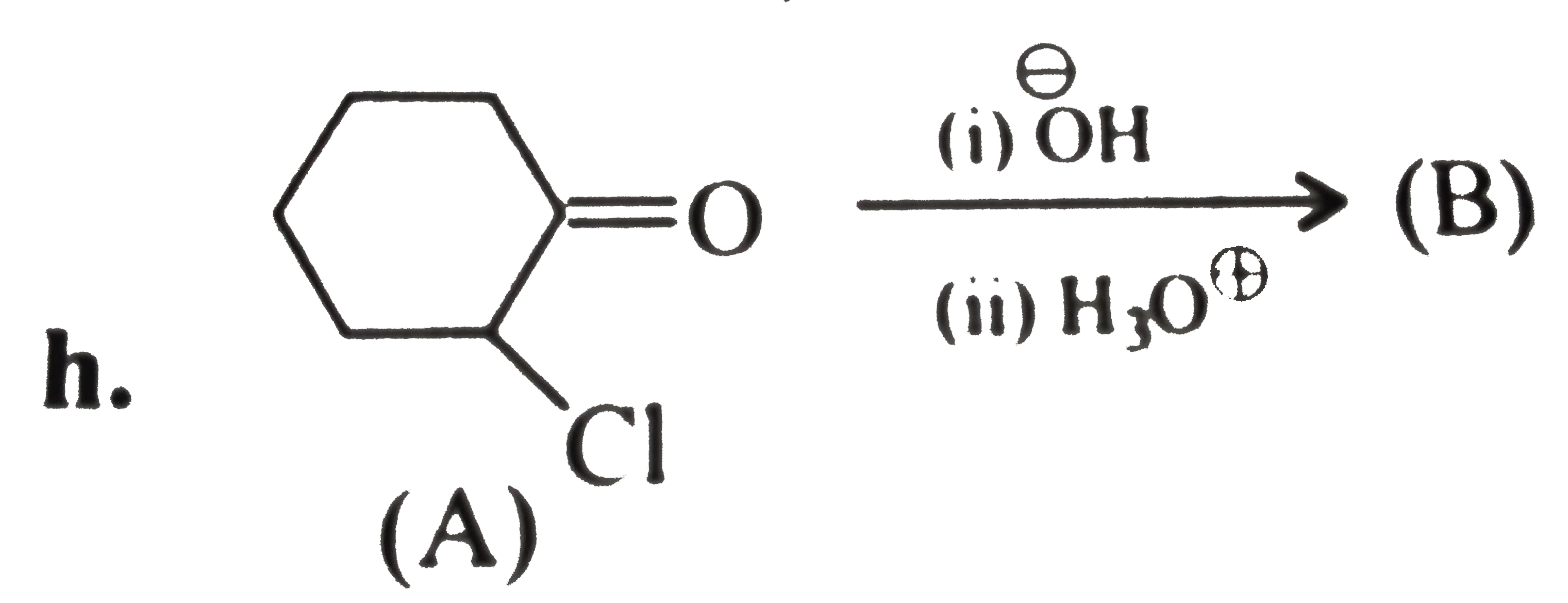
(i) .15:33View Solution
.15:33View SolutionDistinguish between the following :
(a) `MeCOCl` (ethanoyl chloride) and `(II) MeCOOH` (ethanoic acid)
(b) `(I) MeCOOEt` (ethyl acetate) and `(II) MeCONH_2` (ethanamide)
( c) `(I) Ac_2O` (acetic anhydride) and `(II) MeCOOMe` (methyl acetate)
(d) (I) `Me-overset(O)overset(||)underset(O)underset(||)(S)-NH-Me` (N-methyl metane sulphonamide) and (II) `MeCONHMe` (N-methyl ethanamide)
(e) `(I) Me-C -= N` (ethane nitrile) and `(II) MeCOOEt` (ethyl acetate).04:51View SolutionComplete the following reaction :
(a)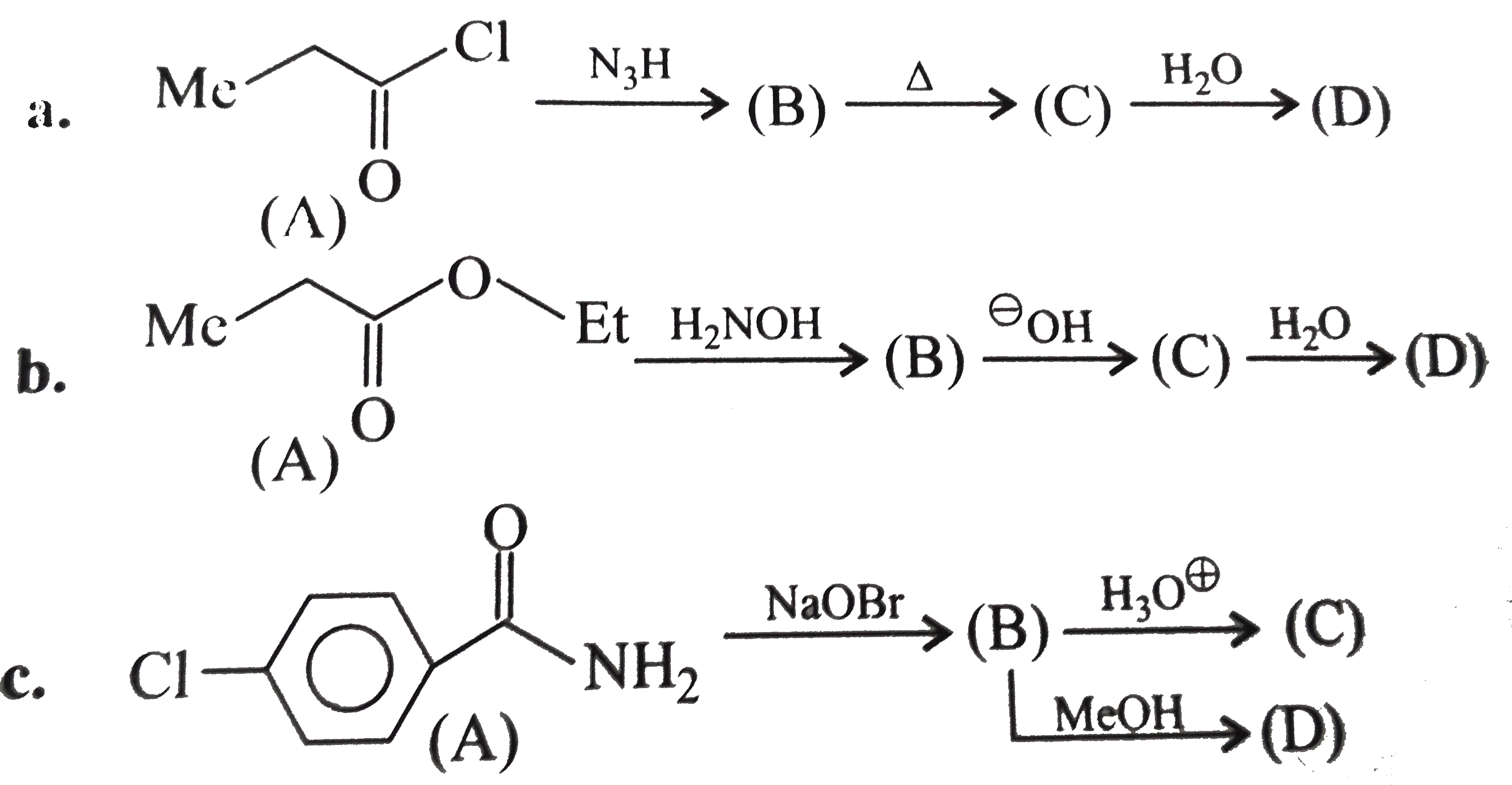
(b)
( c)
(d)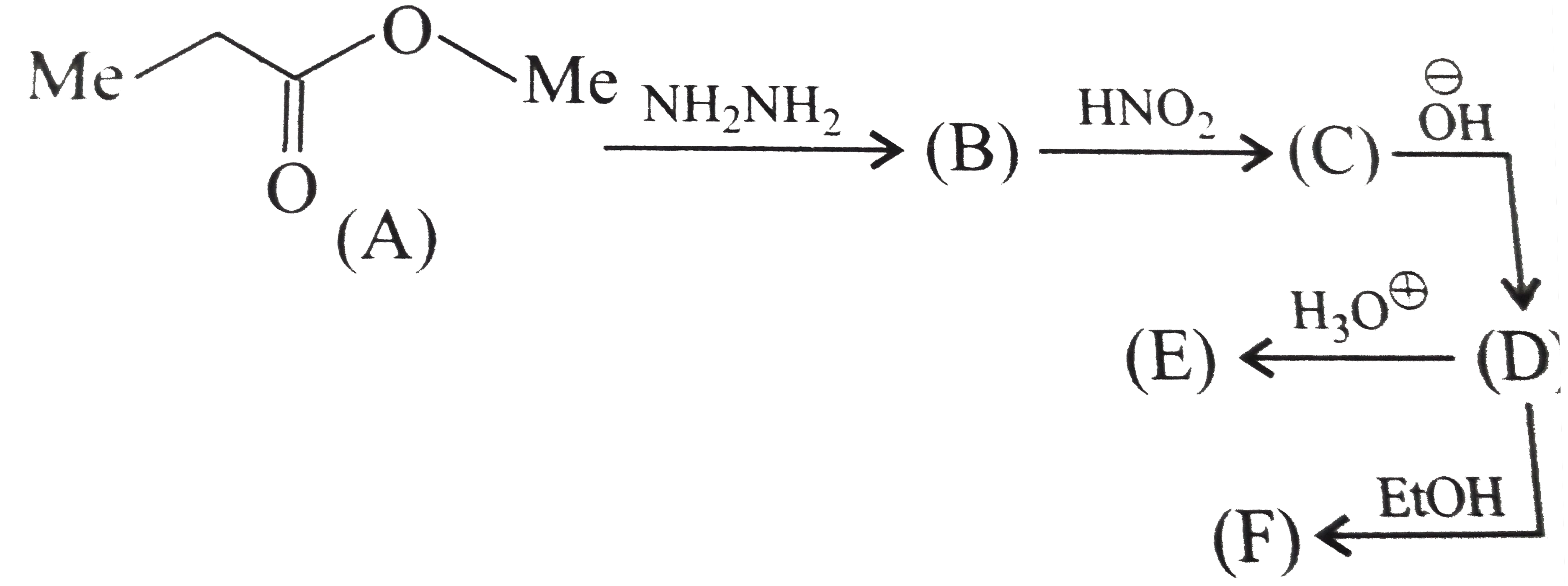
( e)
(f) `PhCHO overset(N_(3)H//H^(o+))underset(Delta)rarr (B) overset(H_(3)O^(o+))rarr (C) +(D)`
(g) 15:48View Solution
15:48View SolutionGive the decreasing order of reactivity of the following amides in Hofmann bromamide rearrangement `(H.B.R.)` reaction.
(a) (I) `PhCONH_2`
(II)
(III)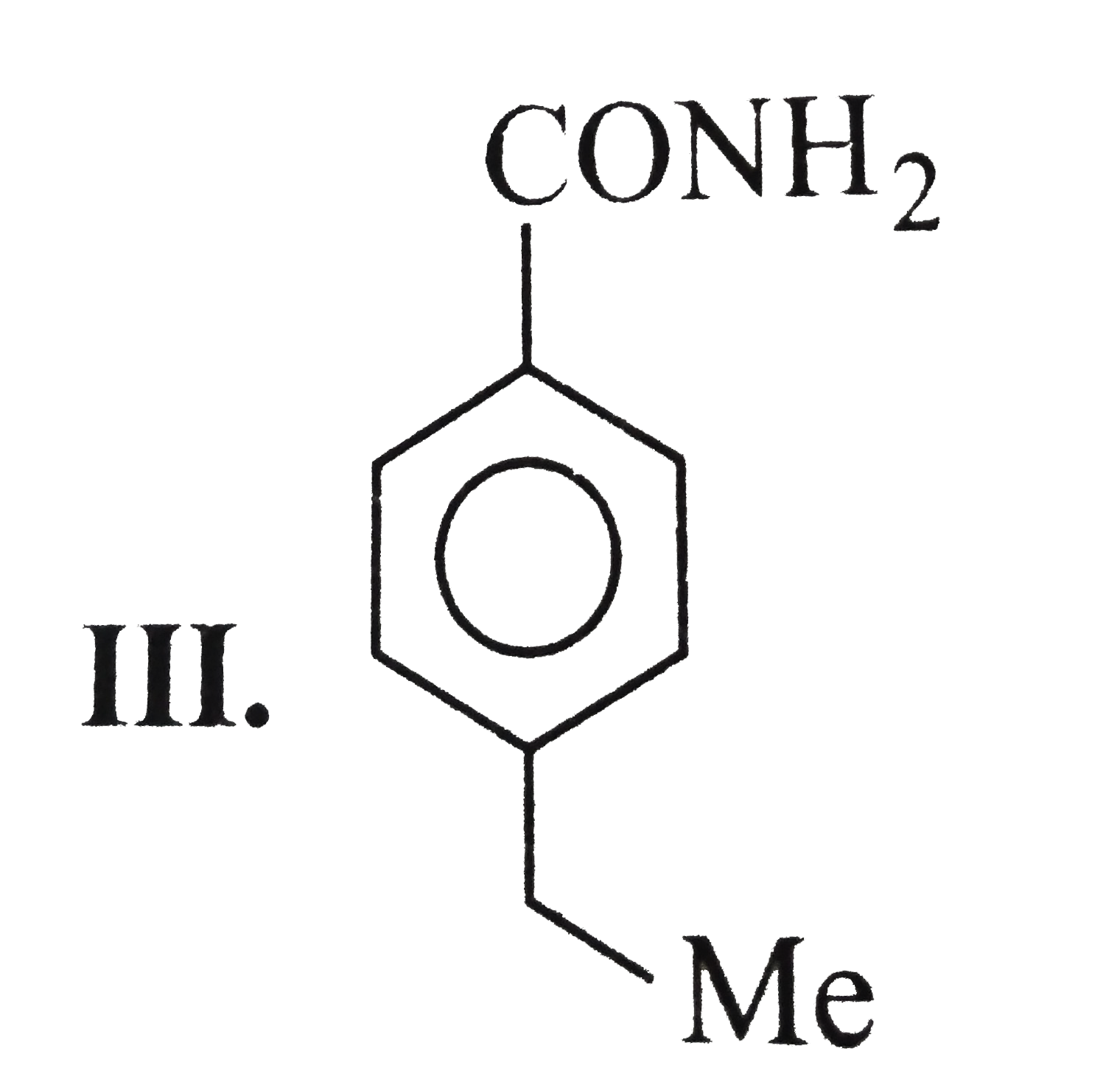
(IV)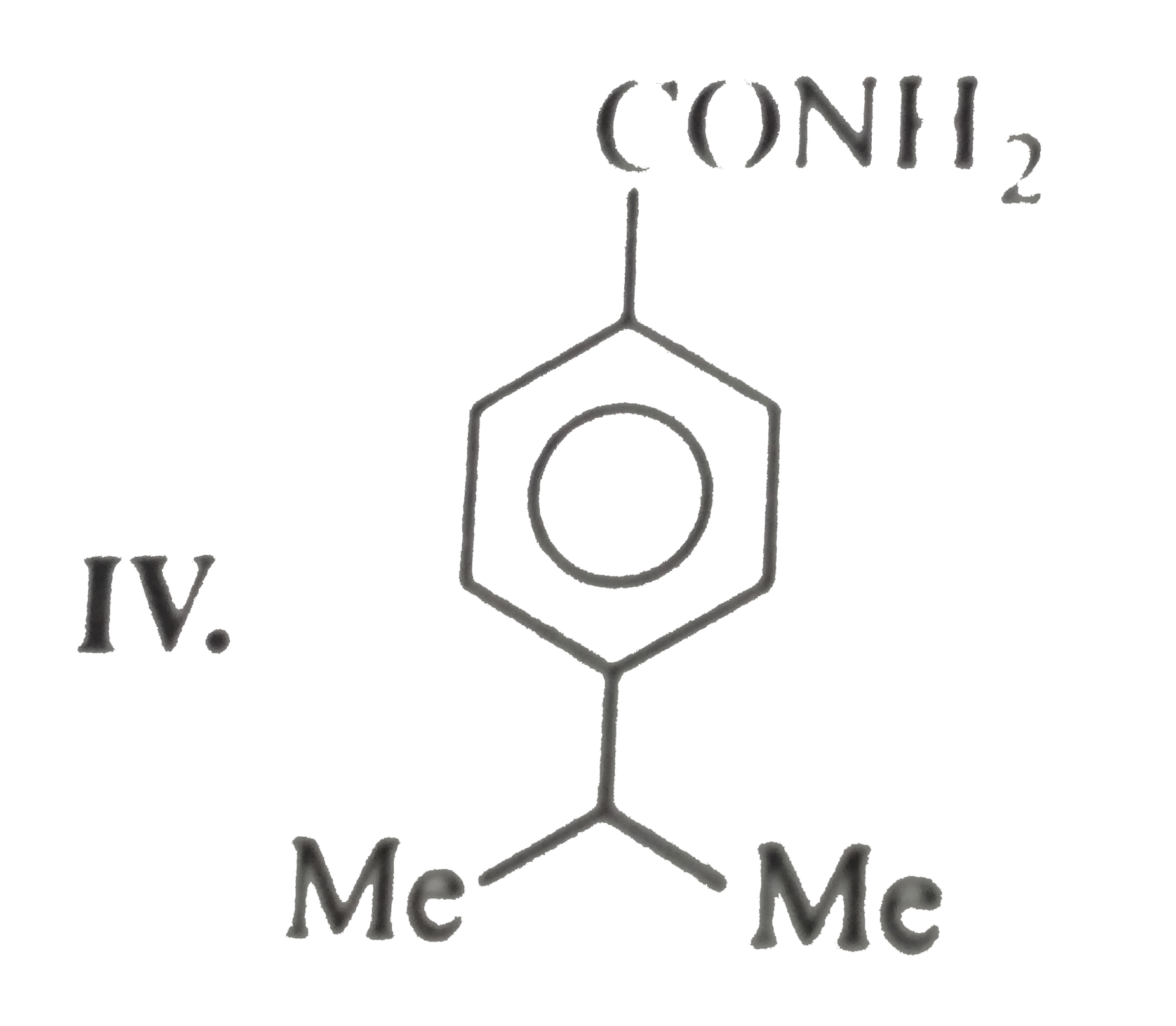
(V)
(VI)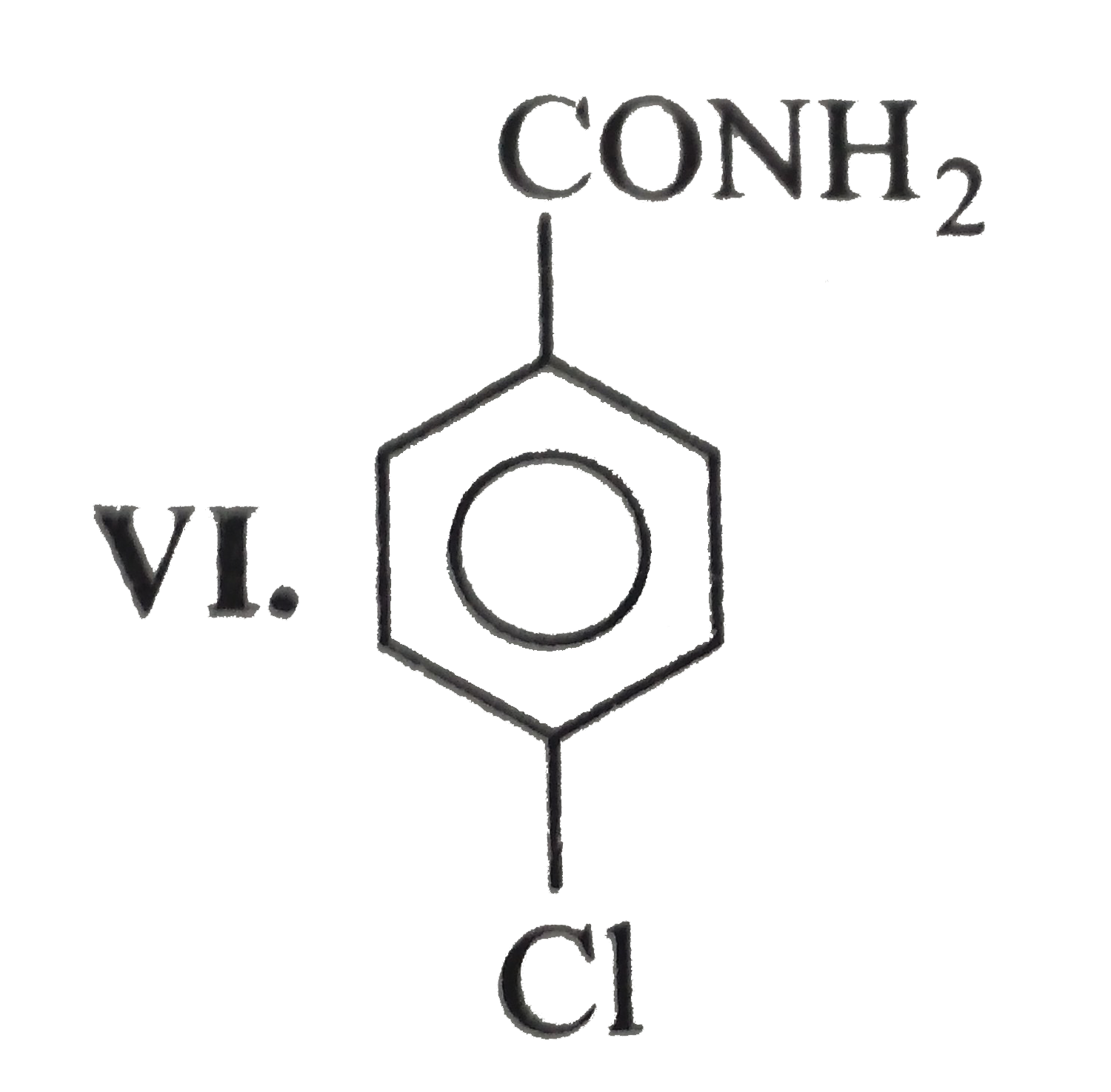
(b) (I) `PhCONH_2`
(II)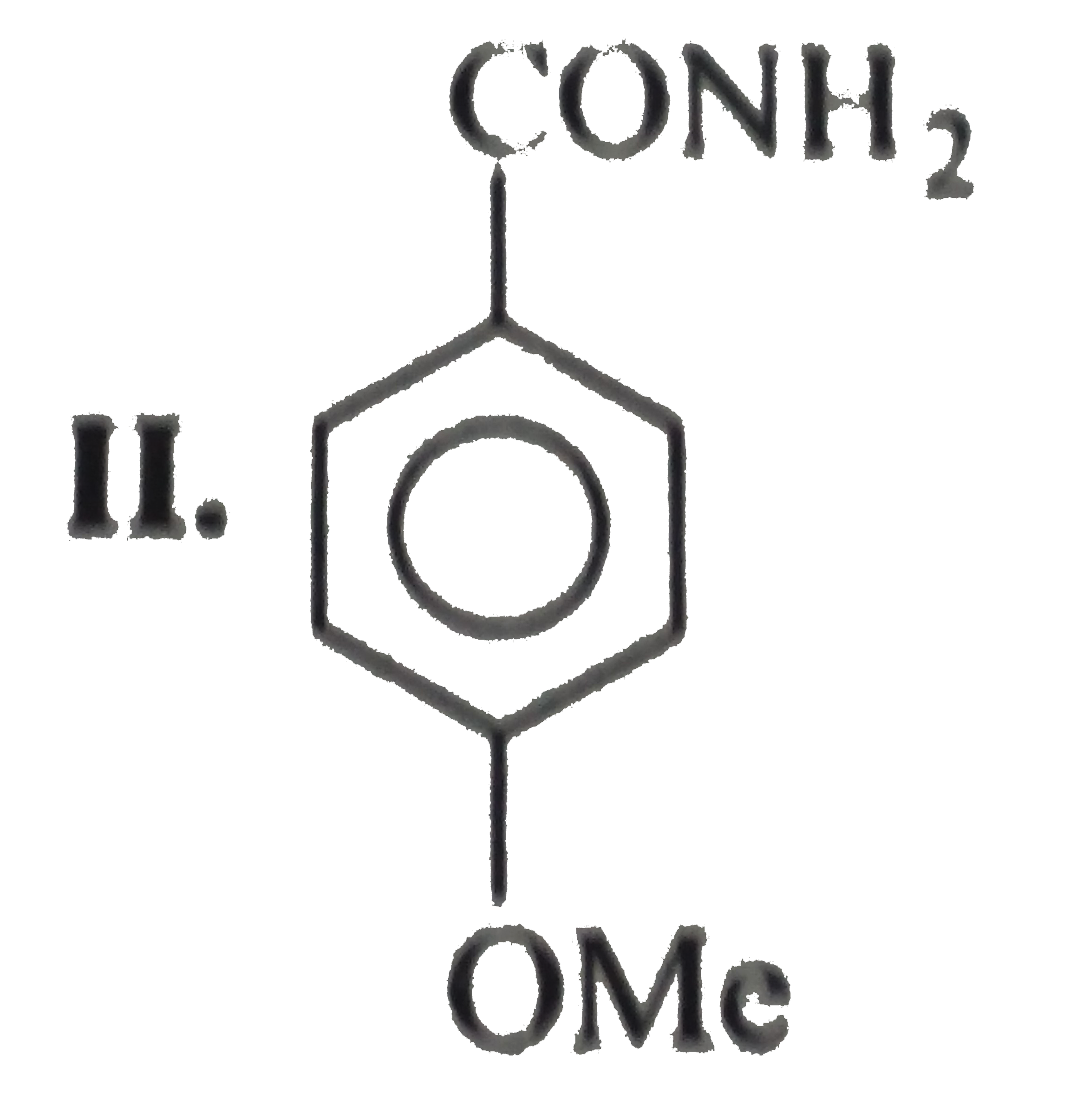
(III)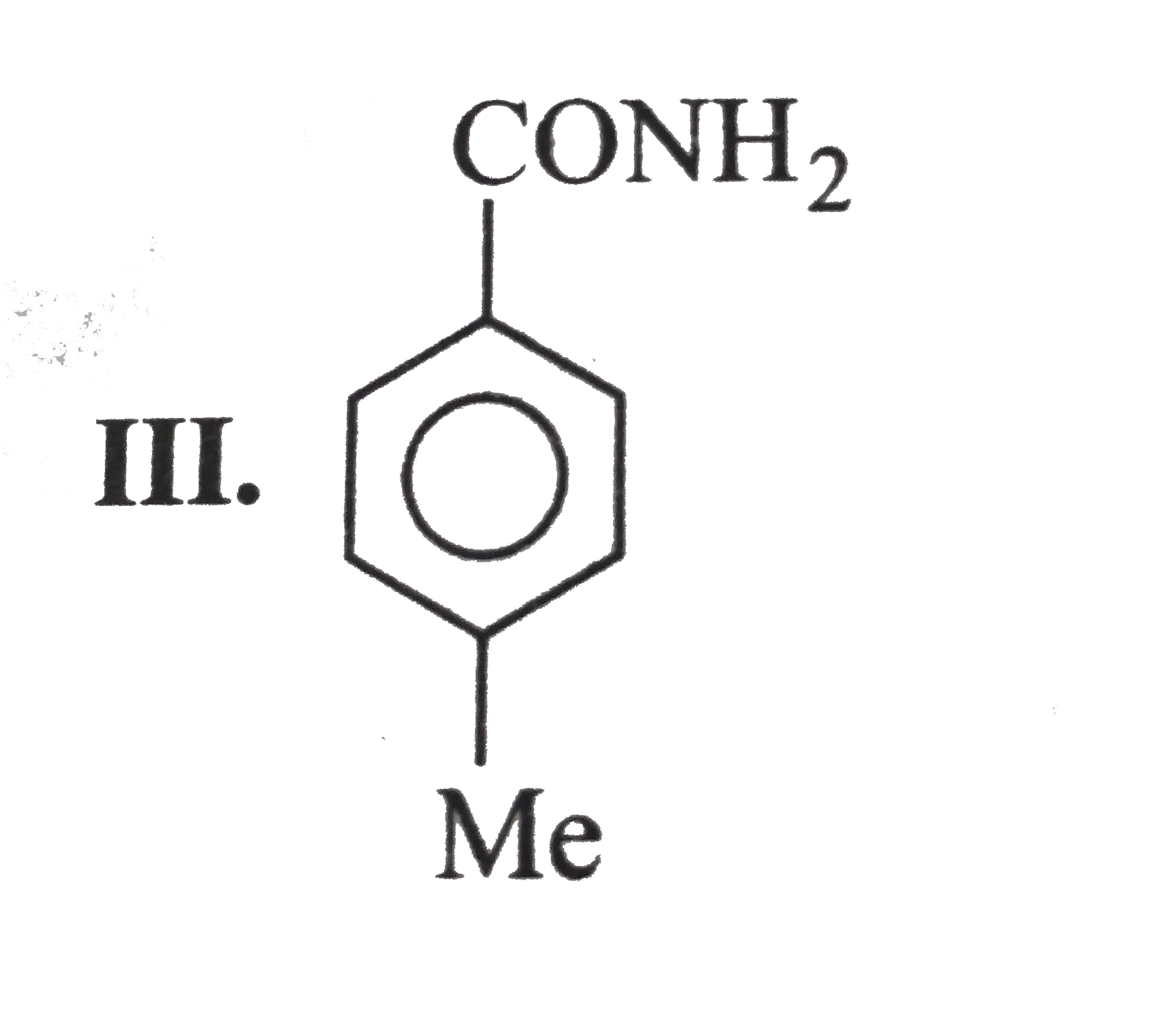
(IV)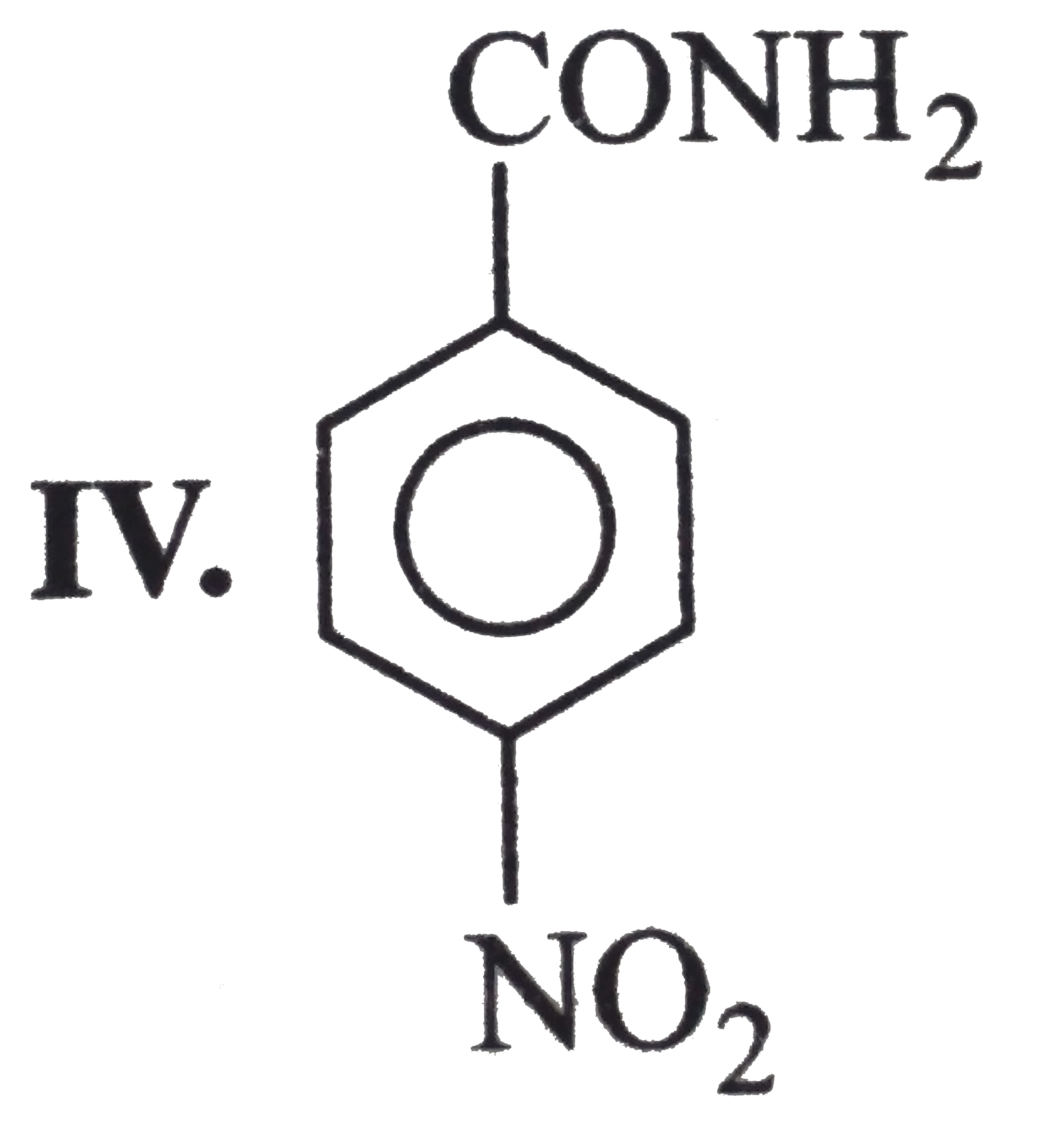
(V)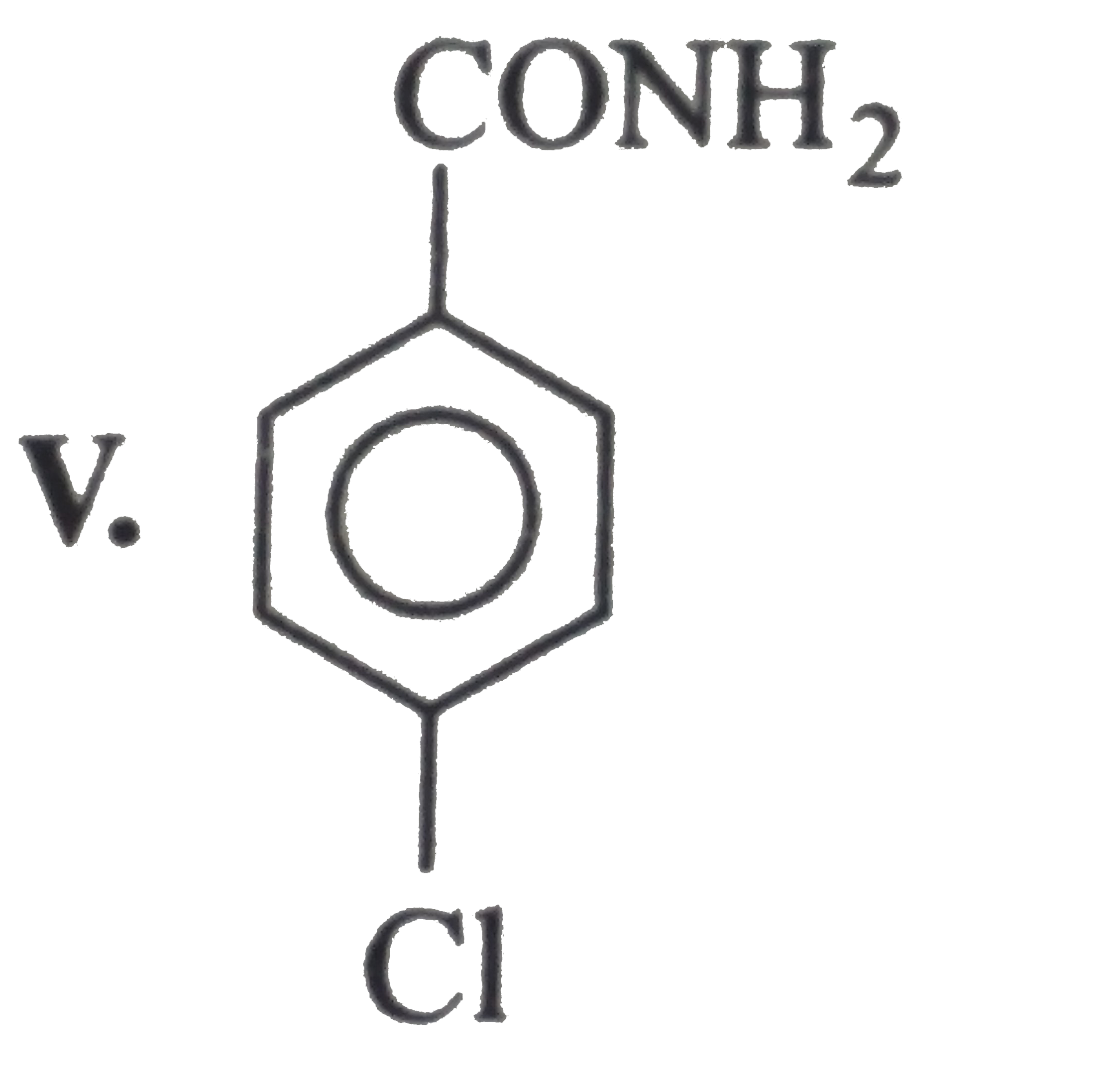 .04:33View Solution
.04:33View SolutionGive the decreasing order of reactivity of the following towards hydrolysis (or nucleophilic acyl substitution) :
(i) (I) `PhCOOMe`
(II)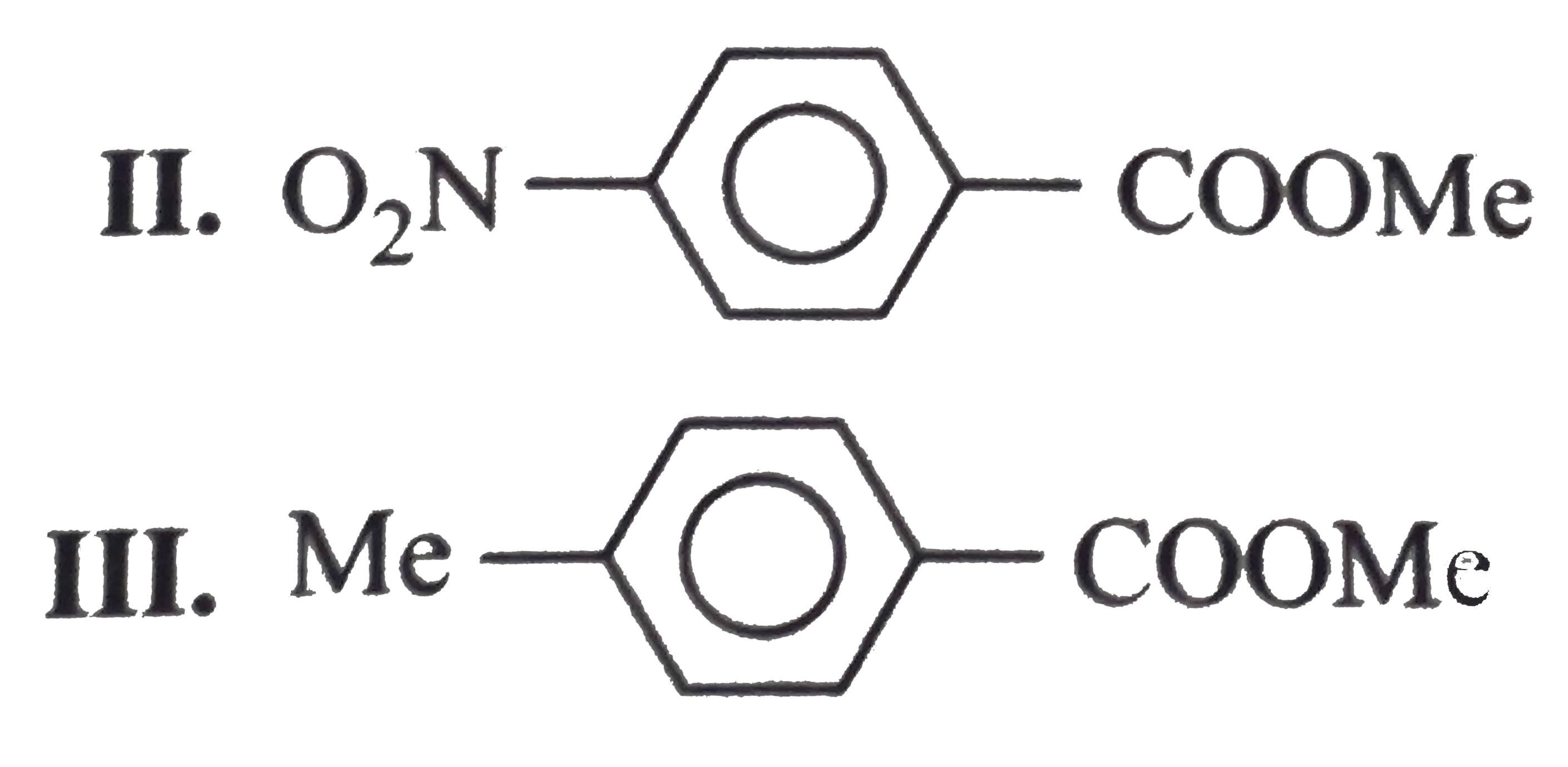
(II)
(IV)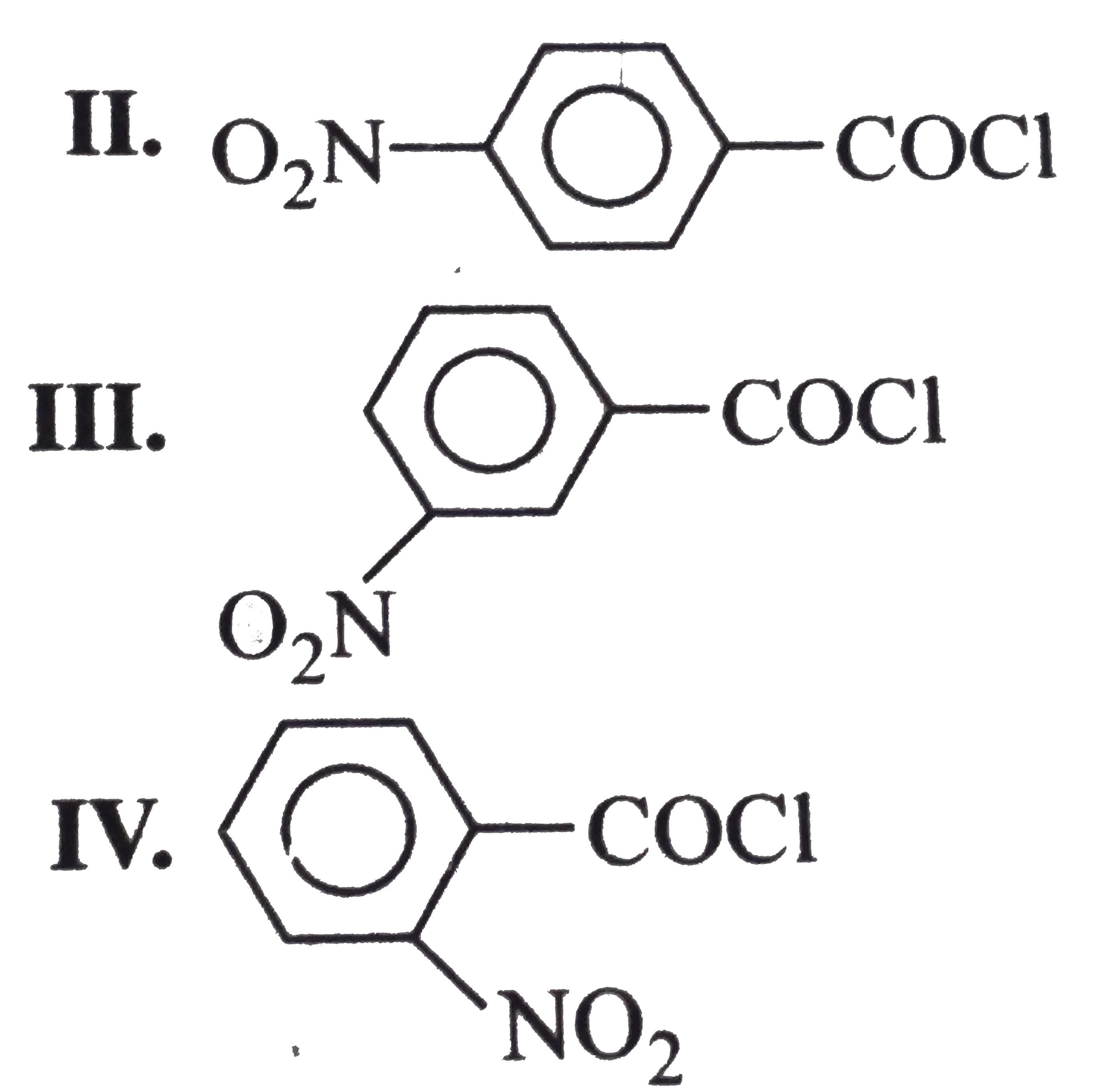
(ii) (I) `PhCOCl`
(II)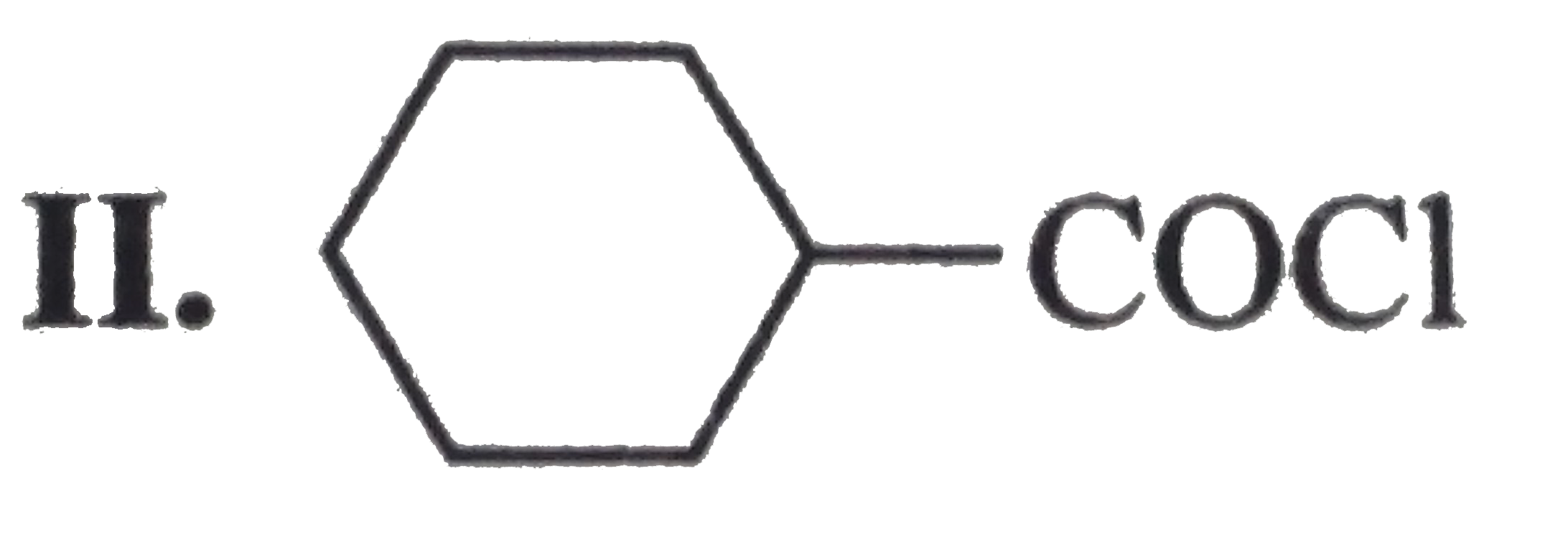
(iii) (I) `PhCOCl`
(III) `Me_2 CHCOCl`
(IV) `Me_3 C-COCl`.
(b) Give the decreasing order of transacylation reactivities and nucleophilic acyl substitution reactivities fo the following :
(I) `MeCOCl`
(II) `MeCON_3`
(III) `(MeCO)_2 O`
(IV) `MeCOOMe`
(V) `MeCONH_2`.04:26View SolutionDifferentiate between the following acids :
(a)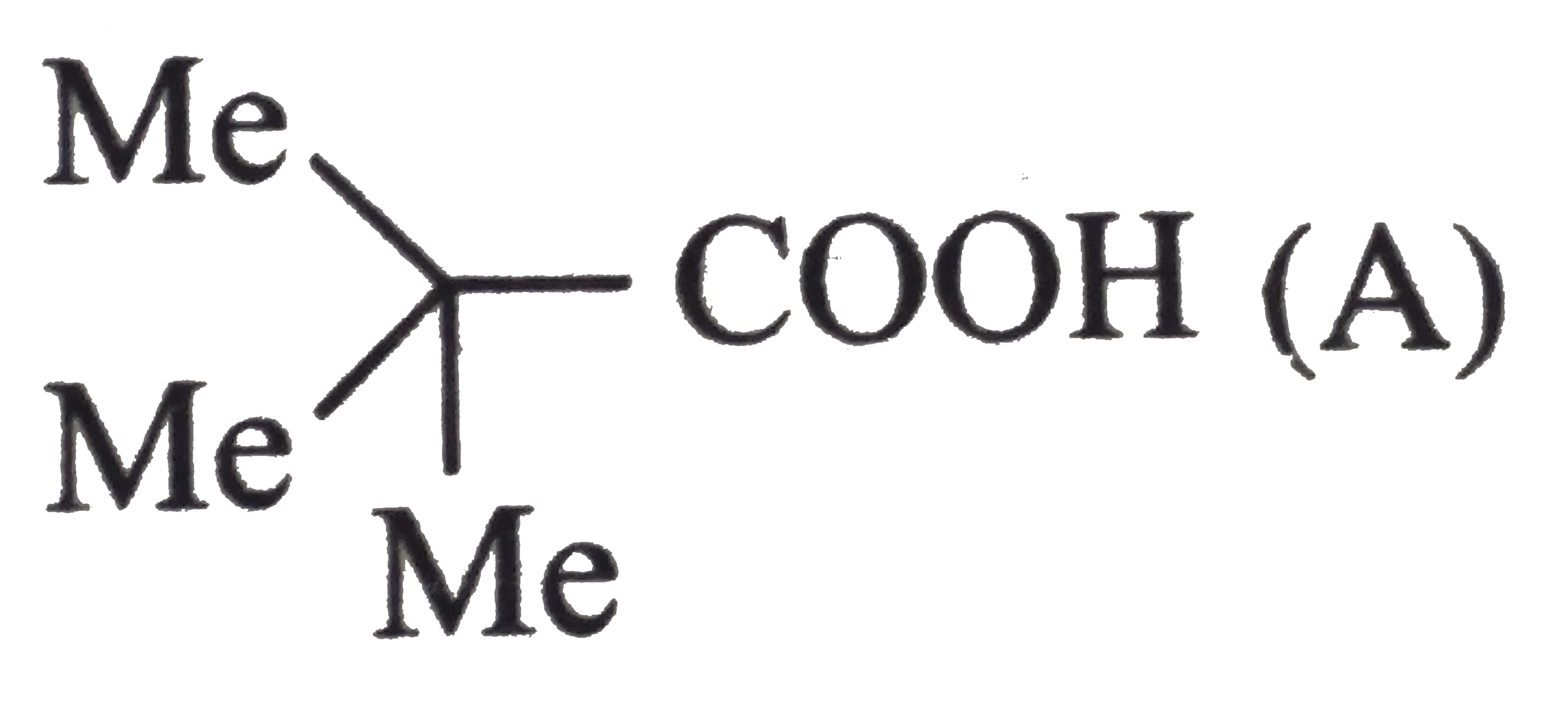
(b)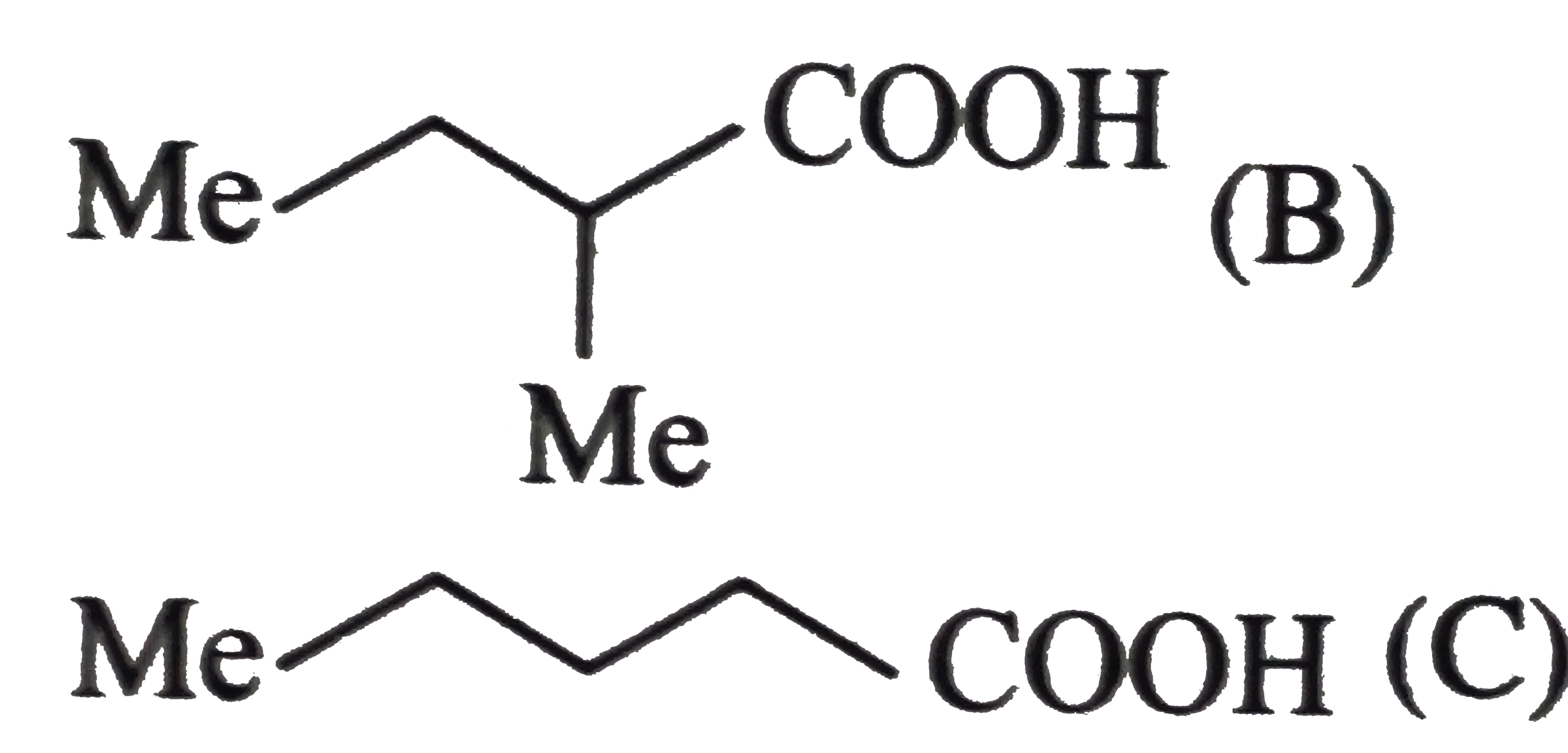 01:54View Solution
01:54View SolutionExplain the machanism of the following reaction :
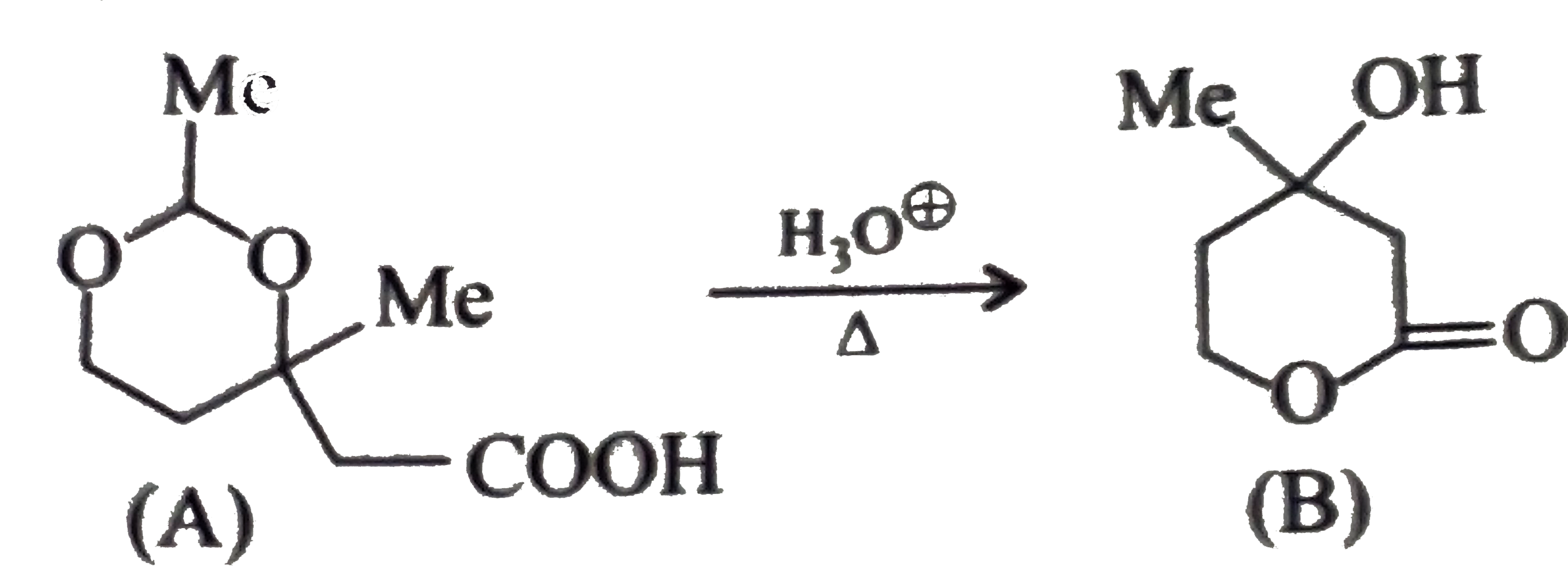 . 01:47View Solution
. 01:47View SolutionComplete the missing reactants :
(a)
(b)
( c)
(d) .03:51View Solution
.03:51View SolutionIdentify :
(a)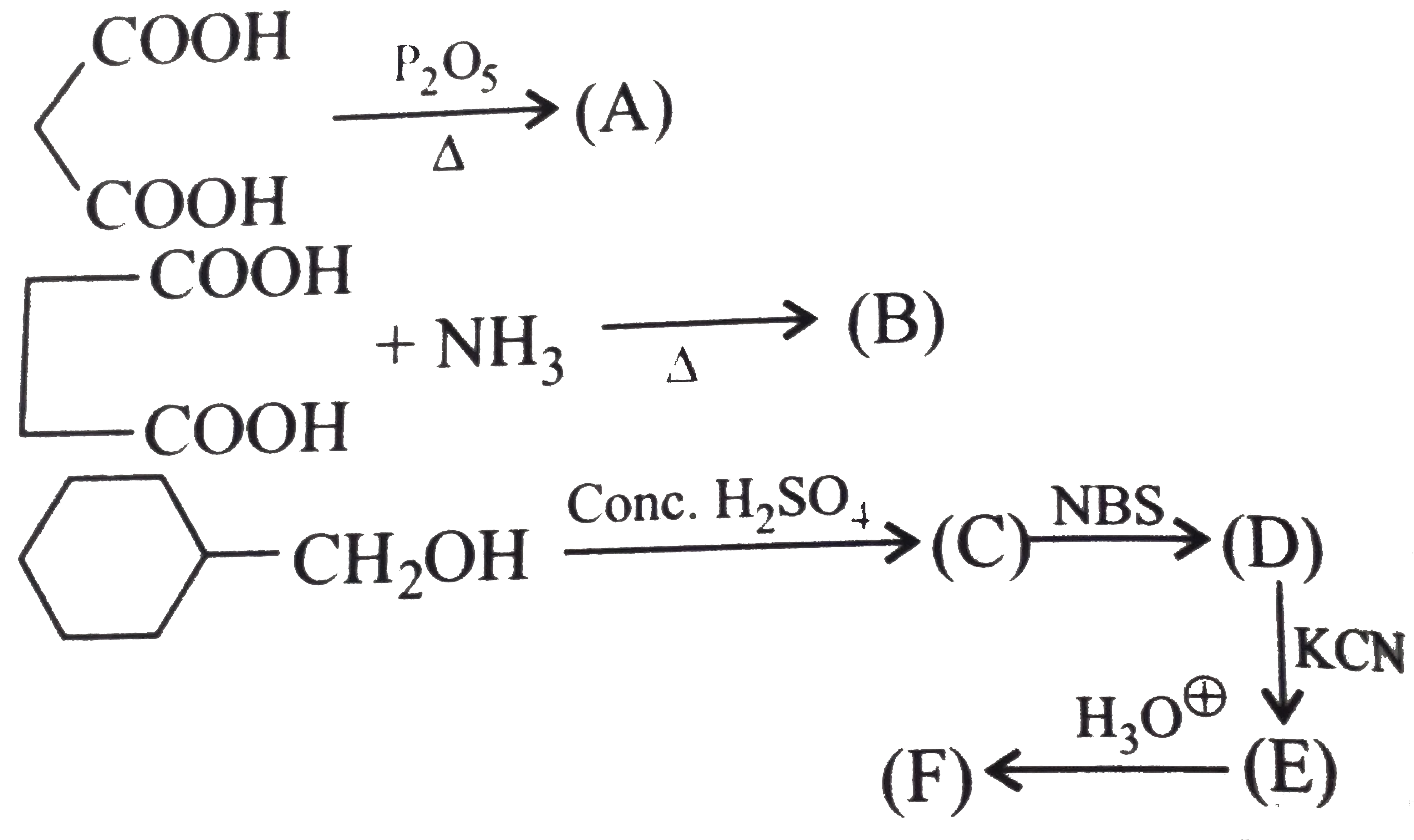
(b)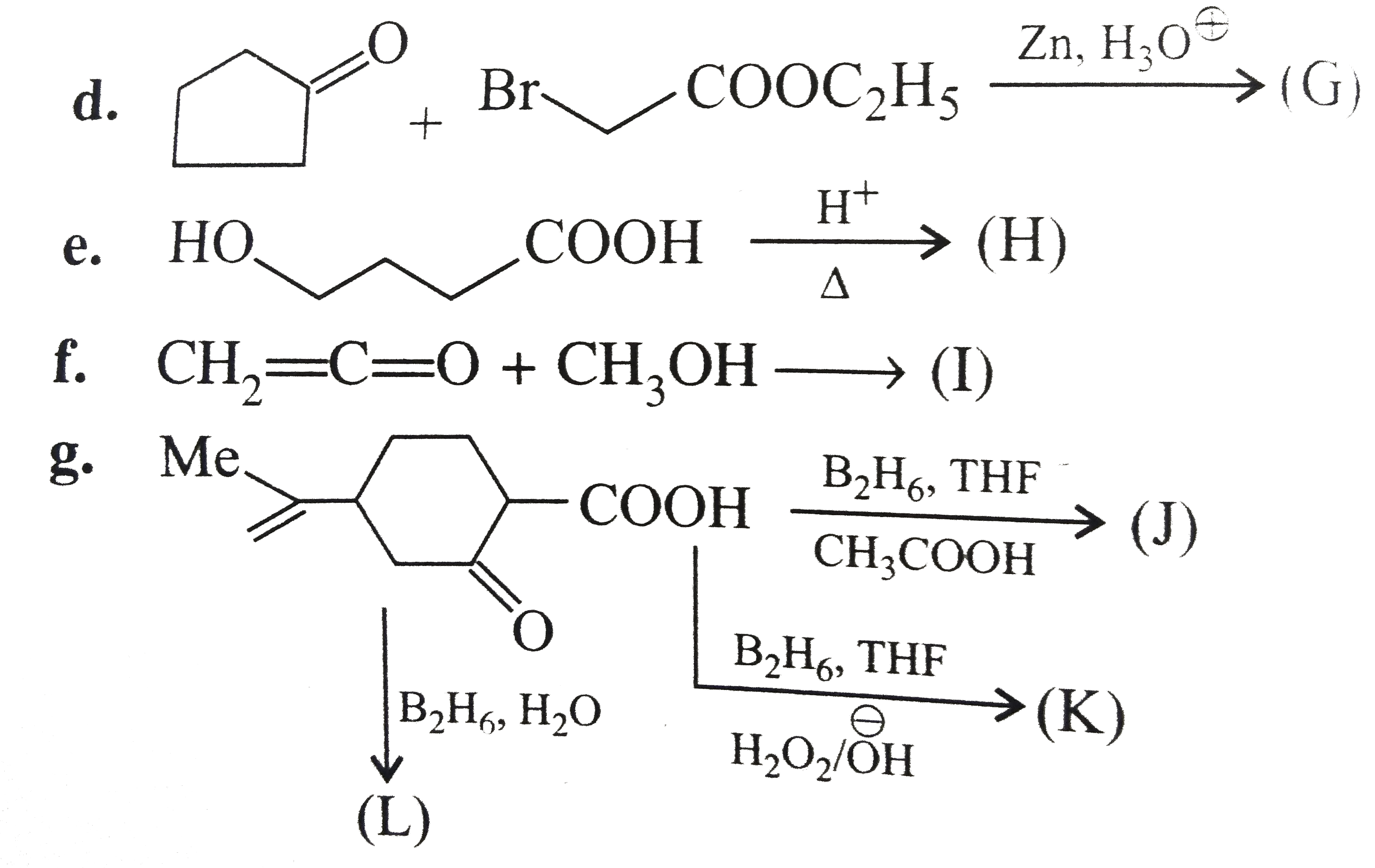 09:59View Solution
09:59View SolutionIdentify :
(a)
(b)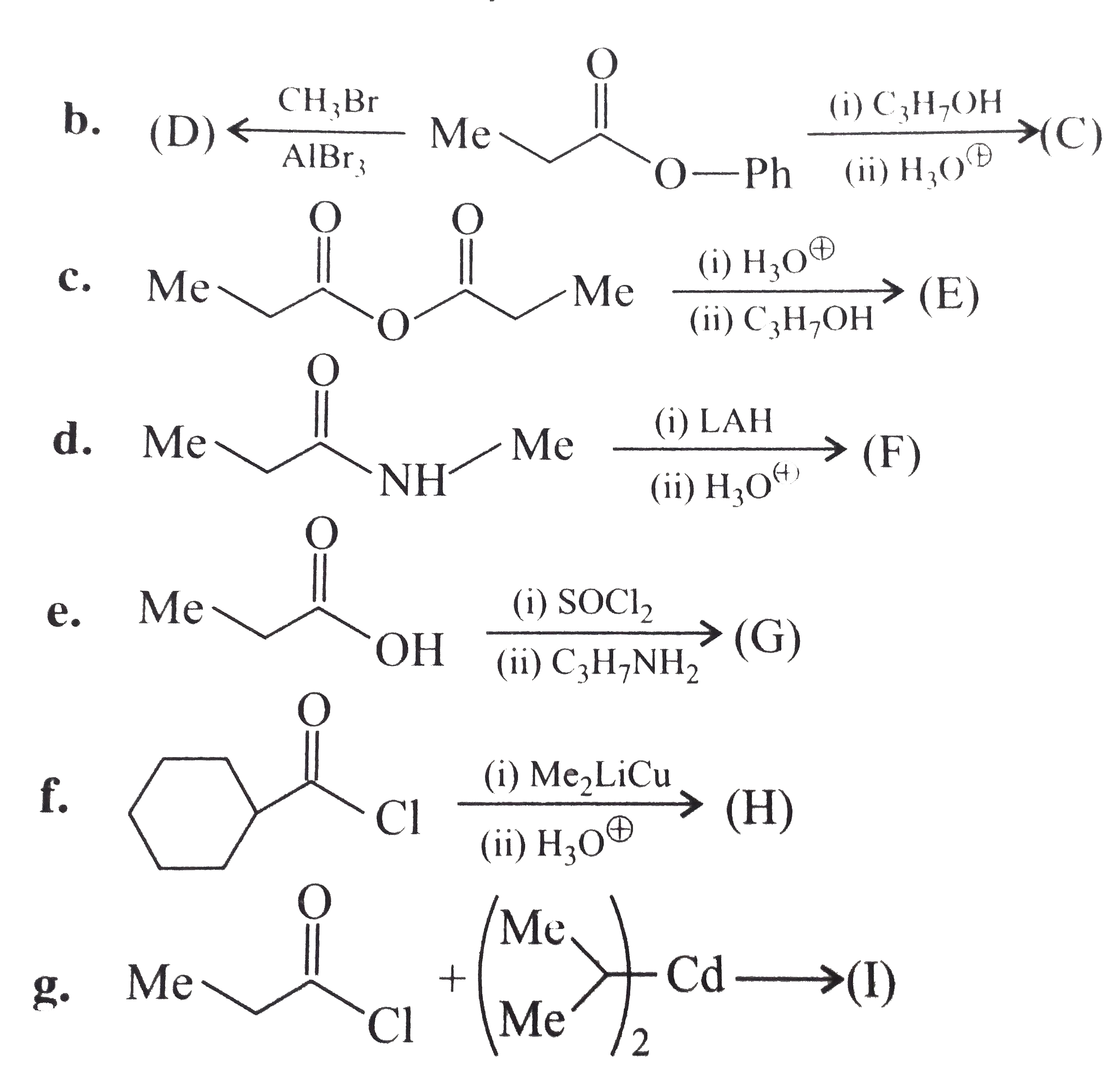
( c)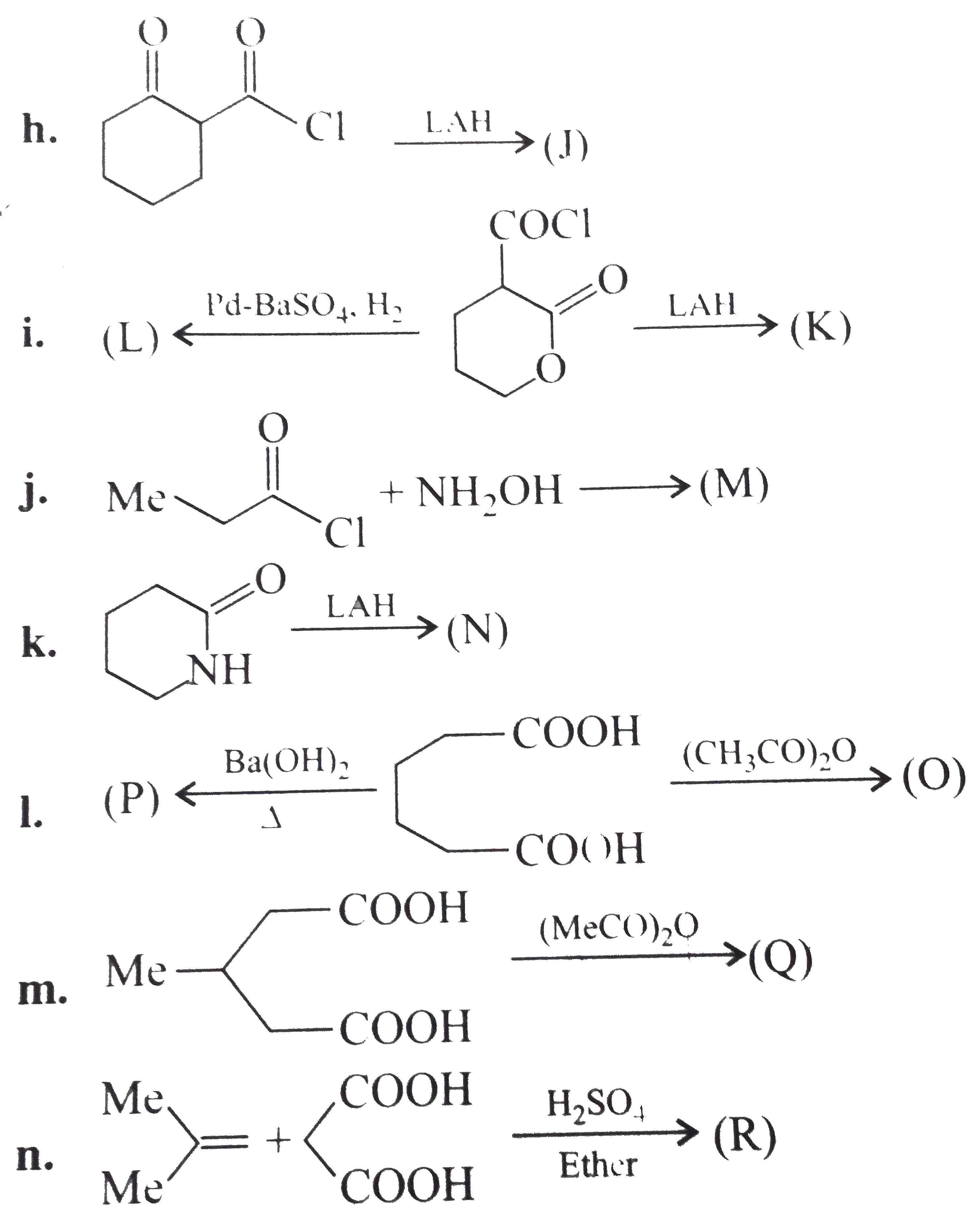 16:10View Solution
16:10View SolutionIdentify `(A)` and `(B)`.
 . 03:16View Solution
. 03:16View SolutionExplain :
(a) Ethyl isobutyrate does not undergo Claisen condensation in the presence of `NaOEt`.
Acetyl chloride is hydrolysed rapidly by water, whereas benzoyl chloride is not.
( c) `beta-`Keto esters are stronger acids than alcohols and esters.05:19View Solution
Solved Examples questions and complete solutions for chapter CARBOXYLIC ACIDS AND THEIR DERIVATIVES of CENGAGE CHEMISTRY (HINGLISH) of Class 12
All Exercises from CENGAGE CHEMISTRY Class 12 CHEMISTRY CARBOXYLIC ACIDS AND THEIR DERIVATIVES
- Exercises (Assertion-Reasoning)
- Exercises (Linked Comprehension)
- Exercises (Multiple Correct)
- Exercises (Singlecorrect)
- Exercises (Subjective)
- Exercises Archives (Analytical And Descriptive)
- Exercises Archives (Assertion-Reasoning)
- Exercises Archives (Fill In The Blanks)
- Exercises Archives (Linked Comprehension)
- Exercises Archives (Multiple Correct)
- Exercises Archives (Single Correct)
- Exercises Archives (True/False)
- Illustration
- Solved Examples
